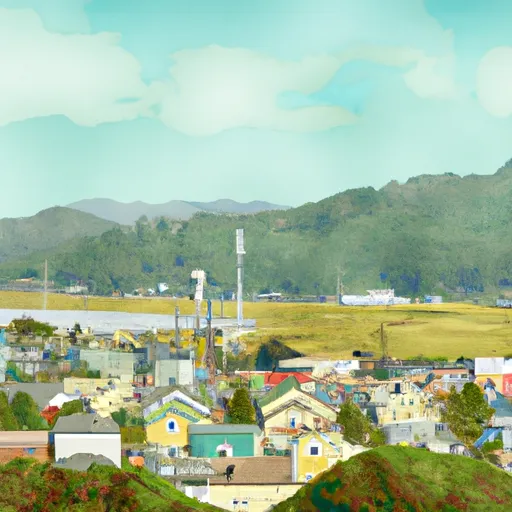-
 Snoflo Premium
Snoflo Premium
Get unlimited access to all our content
With no Ad interruptions! - Start Your Free Trial Login with existing account
Forks-Of-Salmon
Eden Index
Climate
9.9
•
Recreation
5.8
•
Community
•
Safeguard
6.0/10

Forks-Of-Salmon is a small town located in the northern region of California, situated at an elevation of 1,631 feet above sea level. The climate of the area is characterized by warm summers and cool winters with an average annual precipitation of 58 inches. The town is located in the Klamath River basin, along the banks of the Salmon River. The hydrology constituents of the area are dominated by the Salmon River, which offers ample opportunities for rafting, kayaking, and fishing. Outdoor enthusiasts also enjoy hiking and camping in the nearby Marble Mountain Wilderness and Trinity Alps. The town is also home to the Karuk Tribe, who offer cultural tours and events throughout the year.
What is the Eden Index?
The Snoflo Eden Index serves as a comprehensive rating system for regions, evaluating their desirability through a holistic assessment of climate health, outdoor recreation opportunities, and natural disaster risk, acknowledging the profound impact of these factors on livability and well-being.
Climate Health Indicator (CHI): 9.9
Forks-Of-Salmon receives approximately
1130mm of rain per year,
with humidity levels near 73%
and air temperatures averaging around
12°C.
Forks-Of-Salmon has a plant hardyness factor of
8, meaning
plants and agriculture in this region tend to thrive here all year round.
By considering the ideal temperature range, reliable water supplies, clean air, and stable seasonal rain or snowpacks, the Climate Health Indicator (CHI) underscores the significance of a healthy climate as the foundation for quality living.
A healthy climate is paramount for ensuring a high quality of life and livability in a region, fostering both physical well-being and environmental harmony. This can be characterized by ideal temperatures, reliable access to water supplies, clean air, and consistent seasonal rain or snowpacks.
Weather Forecast
Streamflow Conditions
Klamath
Area Rivers
Klamath
Snowpack Depths
Klamath
Reservoir Storage Capacity
Klamath
Groundwater Levels
Recreational Opportunity Index (ROI): 5.8
The Recreational Opportunity Index (ROI) recognizes the value of outdoor recreational options, such as parks, hiking trails, camping sites, and fishing spots, while acknowledging that climate plays a pivotal role in ensuring the comfort and consistency of these experiences.
Access to outdoor recreational opportunities, encompassing activities such as parks, hiking, camping, and fishing, is crucial for overall well-being, and the climate plays a pivotal role in enabling and enhancing these experiences, ensuring that individuals can engage in nature-based activities comfortably and consistently.
Camping Areas
| Campground | Campsites | Reservations | Toilets | Showers | Elevation |
|---|---|---|---|---|---|
| Denny | 5 | 1,389 ft | |||
| Hobo Gulch | 10 | 3,053 ft | |||
| Red Bank | 5 | 1,758 ft | |||
| Nordheimer | 12 | 1,099 ft | |||
| Eastfork | 6 | 2,388 ft | |||
| Mule Bridge - horse | 4 | 2,841 ft | |||
| Matthews | 16 | 1,805 ft | |||
| Ripstein | 10 | 2,742 ft | |||
| Hotelling | 4 | 2,119 ft | |||
| Shadow Creek | 10 | 2,939 ft |
Nearby Ski Areas
Catastrophe Safeguard Index (CSI):
The Catastrophe Safeguard Index (CSI) recognizes that natural disaster risk, encompassing floods, fires, hurricanes, and tornadoes, can drastically affect safety and the overall appeal of an area.
The level of natural disaster risk in a region significantly affects safety and the overall livability, with climate change amplifying these risks by potentially increasing the frequency and intensity of events like floods, fires, hurricanes, and tornadoes, thereby posing substantial challenges to community resilience and well-being.
Community Resilience Indicator (CRI):
The Community Resilience Indicator (CRI) recognizes that education, healthcare, and socioeconomics are crucial to the well-being of a region. The CRI acknowledges the profound impact of these elements on residents' overall quality of life. By evaluating educational resources, healthcare accessibility, and economic inclusivity, the index captures the essential aspects that contribute to a thriving community, fostering resident satisfaction, equity, and social cohesion.

